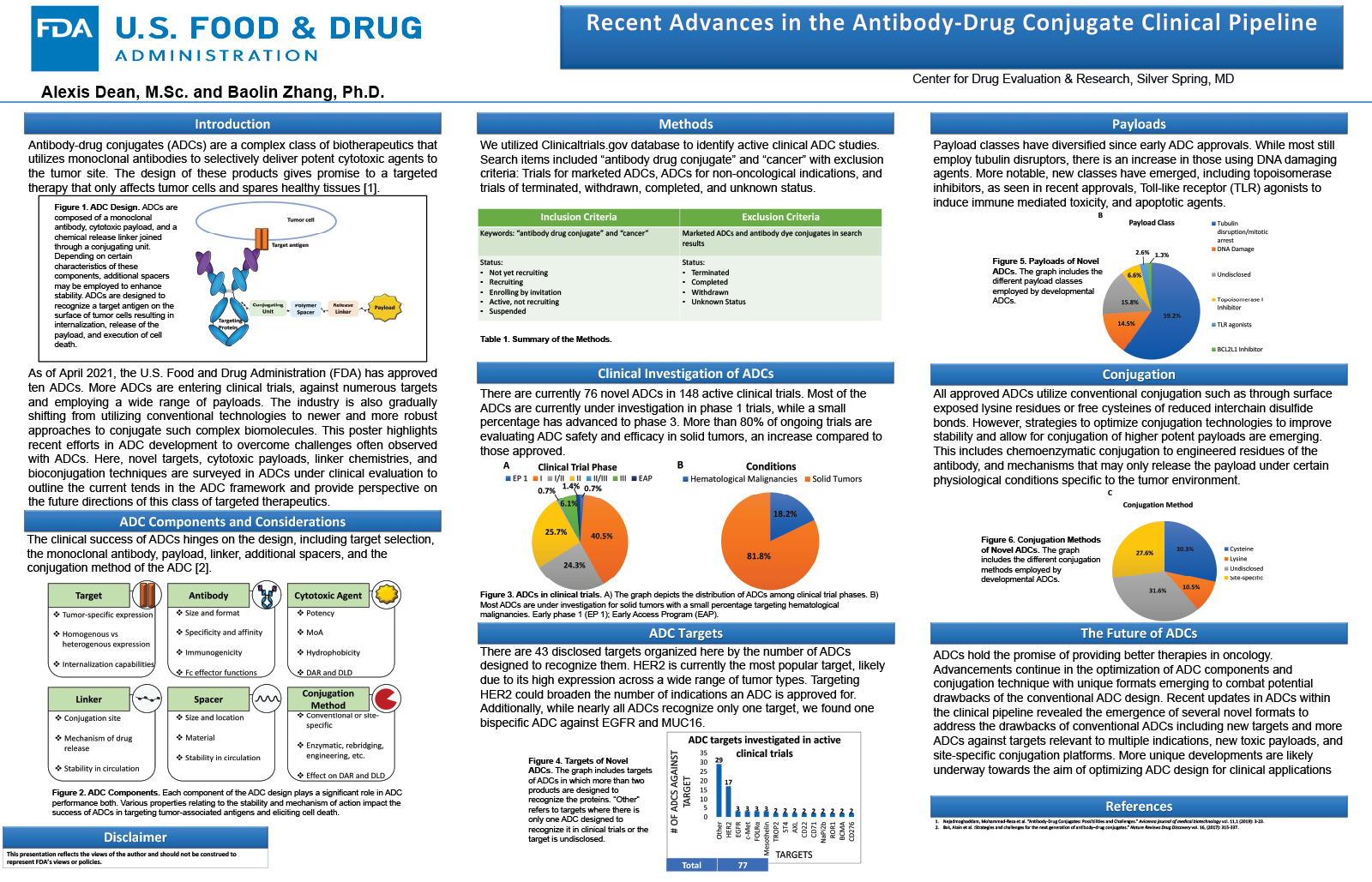2021 FDA Science Forum
Recent Advances in the Antibody-Drug Conjugate Clinical Pipeline
- Authors:
- Center:
-
Contributing OfficeCenter for Drug Evaluation and Research
Abstract
Background
Antibody-drug conjugates (ADCs) are a new class of biopharmaceuticals that utilizes monoclonal antibodies to selectively deliver potent cytotoxic agents to the tumor site. As of January 2021, the US Food and Drug Administration (FDA) has approved ten ADCs for several cancer indications, including Adcetris®, Kadcyla®, Besponsa®, Mylotarg®, Lumoxiti®, Polivy®, Padcev®, Enhertu®, Trodelvy®, and Blenrep®. With more ADCs entering clinical trials, the industry is gradually shifting from utilizing conventional technologies to newer and more robust approaches to conjugate such complex biomolecules. This includes strategies with novel target antigens, more potent payloads, novel linkers and advanced conjugation technologies.
Purpose
This review aims to survey recent efforts in ADC development to overcome challenges often observed with ADCs and provide perspective on the future directions of this class of targeted therapeutics. Novel targets, antibody formats, cytotoxic payloads, linker chemistries, and bioconjugation techniques are highlighted to assess improvements in developmental ADCs towards products with increased safety and efficacy.
Methodology
Clinicaltrials.gov database was used to identify active clinical ADC studies. Search items included “antibody drug conjugate” and “cancer” with exclusion criteria: Trials for marketed ADCs, ADCs for non-oncological indications, and trials of terminated, withdrawn, completed, and unknown status. Literature review was performed to ascertain information relevant to target identity, antibody characteristics, linker chemistries, class of payload, and conjugation techniques not available in the clinical trial registry.
Results
A total of 113 active clinical trials were identified involving 77 novel ADCs and investigating more than 40 different targets. Primarily from literature review, at least five different classes of payload were found to be employed for these ADCs. ADCs were classified as cysteine-, lysine-linked, or site-specific conjugates and various antibody formats used in the ADC designs were identified. Using this information, current trends in the ADC framework involving each component were outlined.
Conclusion
Recent updates in ADCs within the clinical pipeline revealed the emergence of several novel formats to address the drawbacks of conventional ADCs including conditionally active biologic technology for antibodies, new toxic payloads, stable linkers and site-specific conjugation platforms. More unique developments are likely underway towards the aim of optimizing ADC design for clinical applications.

